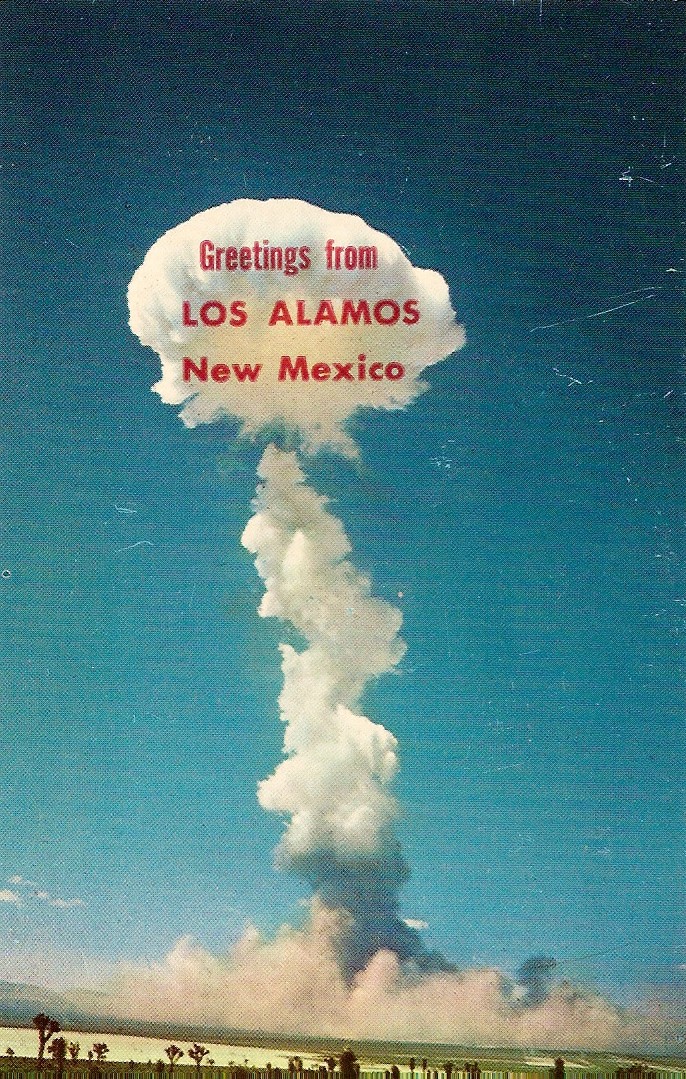Camera Atomica: A Case Study in Nuclear Photography
Tuesday, March 11, 2008, at 18:30
Concordia University, EV-1.615
 "An atomic explosion recently conducted by the U.S. Atomic Energy Commission," Mirro-Krome postcard, Bob Petley: Phoenix, Arizona, before 1955. Based on a U.S. Army photograph.
"An atomic explosion recently conducted by the U.S. Atomic Energy Commission," Mirro-Krome postcard, Bob Petley: Phoenix, Arizona, before 1955. Based on a U.S. Army photograph.
John O'Brian
University of British Colombia
Although I am wary of nuclear photographs, unsure of their
excesses and logic, I am convinced they have a crucial place in
understanding Cold War anxieties at the time of their making. What, it
might be asked, was their role in underwriting a public image of the
Bomb? How should the different visual protocols of journalistic,
documentary, touristic, and post- documentary nuclear photography be
understood? Are there historical meanings that can be attributed to one
of these categories, but not to the others? This paper will address an
instance in which photography participated in the construction of the
atomic imaginary during the Cold War. "Ever since cameras were invented
in 1839, photography has kept company with death," writes Susan Sontag
in Regarding the Pain of Others, a book deliberating
on the hurt and spectacle of war and disaster. My title, "Camera
Atomica," means to recall the title of Roland Barthes's book, Camera Lucida,
a meditation on the relationship of photographic representation and
trauma. For Barthes, cameras are "clocks for seeing" and photographs
work to superimpose present reality on the past. The title is also
indebted to Paul Virilio's observation in War and Cinema that
the technologies of photography and warfare since the mid-nineteenth
century have not only become all-pervasive, they have also developed a
fatal interdependence.
Co-sponsored by the McGill Institute for the Study of
Canada and the Department of Art History and Communications Studies,
McGill University
John O'Brian is Professor of Art History and
Faculty Associate of the Peter Wall Institute for Advanced Studies,
University of British Columbia. He has published extensively on modern
art history, theory and criticism, particularly on the
institutionalization of modernism in North America, producing 12 books
and more than 50 articles. These include: Ruthless Hedonism: The American Reception of Matisse; Voices of Fire: Art, Rage, Power, and the State (co-edited with Bruce Barber and Serge Guilbaut); The Flat Side of the Landscape; and Degas to Matisse. He is also the editor of the four-volume edition of Clement Greenberg: The Collected Essays and Criticism.
His current research interests focus on national landscape narratives,
especially as they are played out in North America, and on visual
responses in art and photography to nuclear threat and destruction since
1945.

